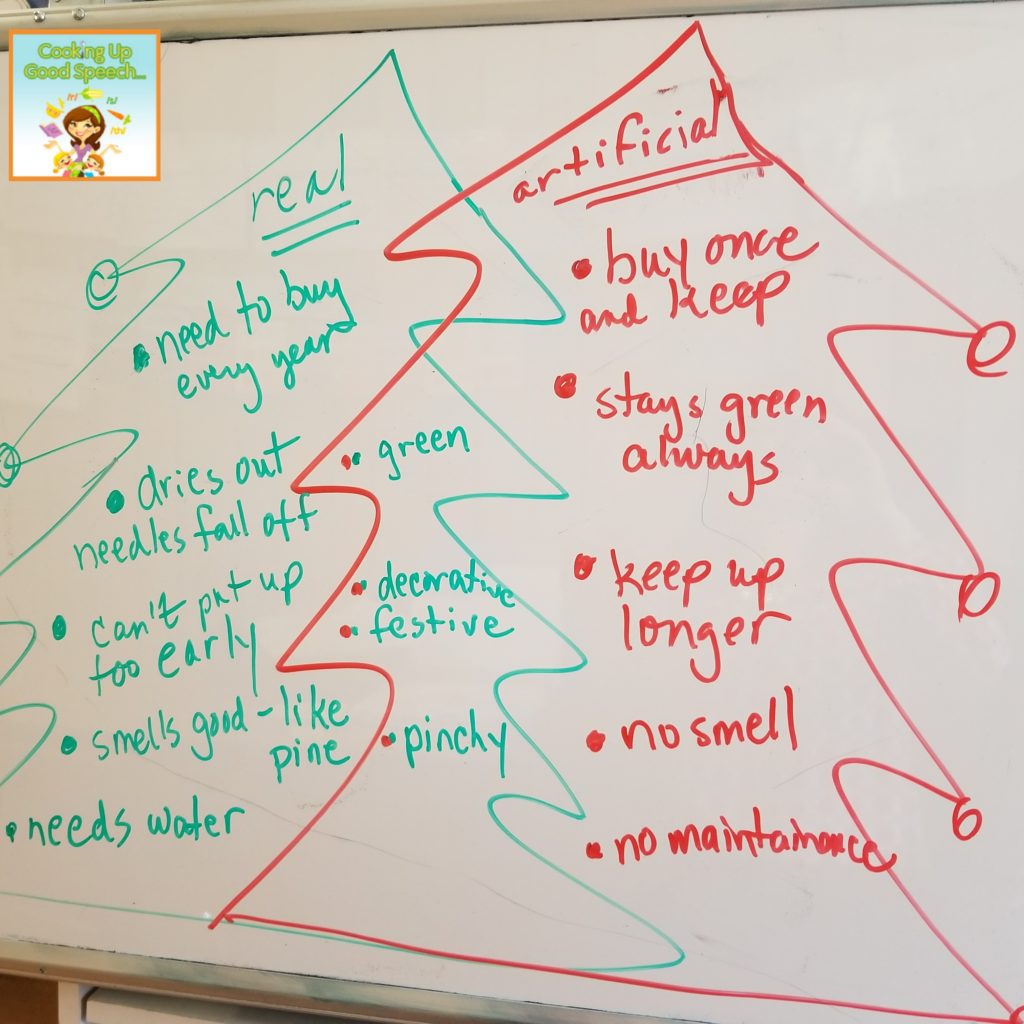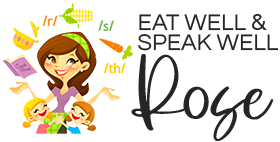
I have been finding effective ways to incorporate seasonal items and objects that I have collected over the years in my speech and language plans for my older students. In the fall, I created a sensory bin of fall items from the seasonal decorations I use around my house, dollar store finds, and kitchen spices and seasonings. I kept in mind ways to address all five senses in order to make the lesson as meaningful as possible. This activity was well-received by my older students who loved this interactive way of brainstorming, describing adjectives, and applying them to coherent, cohesive sentences. During the winter/holiday season, I once again decided to bring out the sensory bin, filling it with items that best represented the season.
In my winter bin, I included the following items in order to address all the senses: flashing holiday lights (sight/touch), peppermint candies (smell/taste), pine cones, Cardinals, a present, Poinsettias, snowflakes, winter gloves, Santa, Evergreen trees (touch/sight), jingle bells (sound), pine candles (smell). What else would you include in this bin?
I used the sensory bin to address the following goals with my students:
- compare/contrast (i.e. flashing lights/jungle bells, Poinsettias/Evergreen tree) adjectives (describing)
- direction following (i.e. 3-step directions: put three mints in the bin, ring the bells 5 times, put two pine cones next to the bin.)
- sentence expansion (use the included freebie to write sentences that contain descriptive words and elaboration)
- narratives (incorporate 3-4 items to create a cohesive story)
For those students who struggle to generate information, I provided a “word bank” to assist them, with the goal of having them independently generate and produce the ideas on their own eventually. You can laminate this sheet or place it into a page protector and ask students to use a dry erase marker to circle the vocabulary that relates to the object(s) being discussed.
You can grab your FREE winter word bank by entering password: Happy Holidays!

If you celebrate Christmas, then you probably have a tree displayed in your home during the month of December. But do you own an artificial tree or do you purchase a live tree every year? When I did a Google search regarding living vs. artificial trees, I found there were tons of articles debating which is better! I decided to ask my students to tell me which they prefer and then brainstorms the similarities/differences (pros/cons) of each type of tree. I created my own “Tree Venn diagram” to organize our ideas. I think it turned out pretty cool—see how the overlapping trees form
I hope these ideas spark some inspiration for you and your older students. I know how difficult it can be to motivate them. These ideas have provided successful results for me in my language lessons. Best of luck and











Leave a Reply